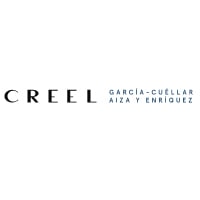

Executive legal and compliance director | Banco Sabadell



Luis Alberto Cárdenas Díaz
Executive legal and compliance director | Banco Sabadell
How do you approach managing legal aspects during periods of instability or crises, and how does your legal strategy align with the broader business strategy to ensure the organisation’s resilience?
We focus on prevention and strategic alignment, not just by responding to crisis but by trying to anticipate and avert them. We follow a threefold approach. On the one hand, we closely collaborate with the bank’s business and financial areas, to ensure that we always support the strategic business objectives of Sabadell and a holistic understanding of emerging threats and opportunities. On the other hand, we constantly analyse Mexico’s economic and political environment, trying to foresee potential impacts to our business, and anticipate legal and economic changes that could affect the bank’s activities in Mexico, thus adapting our internal policies accordingly. Lastly, we continuously monitor and assess our regulatory compliance and maintain open communication with regulatory authorities to assure a quick and effective response to any changes we may face. As an example of that approach, when the Covid-19 crisis started, the bank was able to restructure its credit portfolio, without using any extraordinary legal measures, and even before the financial authorities issued special regulatory exceptions.
Our legal strategy will always go hand in hand with Sabadell’s business needs and objectives. Our main responsibility is to foresee, prevent and mitigate risks, enabling the company to thrive. So that we may carry out that responsibility, we prioritise clear and effective communication. I always maintain an open line of communication with every member of my team, as well as with the Bank’s executive team, and encourage every member of my team to do so in their day-to-day work.
What are the main cases or transactions you have been involved in recently?
I oversee all of Sabadell’s legal and compliance issues. I am ultimately responsible for all credit transactions instrumented by the bank in Mexico. Considering their complexity, I would like to point out, our participation as lenders and/or agents in financings for Grupo Ultrafemme, Grupo Pilgrims, Instituto Educativo Tepeyac, and Grupo Zamin, within the business banking sector (banca de empresas), and in financings for Marhnos, Cinépolis, Engie, IGSA, Nadro, Fibra Soma, Gupo Parks, within the corporate banking sector (banca corporative).
In addition to our credit transactions, during this last year, we were involved in the design and offering of Sabadell’s first 100% digital account, through which we are entering the retail business in Mexico. This is one of our most important projects and has required the participation of the legal department in every aspect of its design and implementation, from defining the nature of the account, its functionality, compliance with regulatory requirements (particularly, those applicable to digital account openings), anti-money laundering, authorisation by the National Banking and Securities Commission (CNBV), marketing and consumer protection.
This account is the only one in Mexico that allows clients to programme regular deposits from accounts opened at other credit institutions, without having to use the other bank’s infrastructure. To achieve this, we worked side by side with our technology department, and the authorities, to offer a new, simple, user friendly and safe product that complies with all legal requirements.
What strategies do you employ to ensure the successful digital transformation of a legal department while maintaining compliance with Mexico’s data protection laws?
In my area, we embrace technological tools, even if they replace some roles traditionally assigned to lawyers. The challenge is to combine, safely and responsibly, both technology and legal expertise, to benefit our internal and external clients, overcoming the fear that lawyers should handle all legal matters directly, and that legal matters should not be automated.
Additionally, for banks, the challenges of digitalisation are not limited to data protection, but also encompass bank secrecy and other operational provisions. In all strategies we implement, we first analyse compliance with all applicable banking regulation. Internally, we do not implement any project that is not legally “bullet-proof”.
With that in mind, we realised that a lot of time was wasted in drafting documents, sending them to counterparts, negotiating, printing and physically executing them, and then storing them. We understood that we were not efficient. To address this, we envisioned a platform that would allow us to draft, negotiate, sign and store contracts (as well as other documents) digitally. After rigorous compliance and regulatory review, we presented the case for approval to the internal committees, with the legal team leading the project. Our goal was to reduce response times by managing and signing documents electronically, looking to provide the Bank with a competitive advantage, enabling our internal and external clients to finalise negotiations more quickly. Once the project was approved, we began with signing basic documents, such as Non-Disclosure Agreements (NDAs), digitally. After we implemented digital negotiation and signing, we realised we could close NDAs within a day, regardless of the location of our counterparts. We then moved to a second phase, negotiating, and electronically signing all contracts with the Bank’s external suppliers. This also worked effectively, significantly reducing closing times.
Considering the success of the first two phases of digitalisation, we realised that this approach needed to extend to other processes and areas, looking to replicate our efficiency gains. So, we developed another business case to digitalise other bank processes, launching phase three of our efficiency and digitalisation programme, covering onboarding for loans, account opening, and internal operational forms. This involved extensive analysis of regulations, as well as the division of processes into microprocesses, as not everything can be digitalized due to specific banking requirements.
How do you manage and motivate your legal team to ensure high performance and professional growth?
As head of the legal and compliance department, my priority is people and my main responsibility is to manage my team of in-house lawyers and external counsel, as well as coordinate with Sabadell’s management. Our team of over 50 collaborators, includes six direct reports, equally divided between men and women. For Sabadell and me, equality and fairness are essential, as we strive to ensure a supportive and collaborative work environment.
Low turnover has allowed us to plan career paths for committed and outstanding team members. We aim for cross-functional growth within our team, encouraging learning and development across various roles in the department. We have found that this fosters trust and commitment, essential for high performance.
My leadership vision includes providing the members of my team with exposure to significant matters, accompanying and guiding them, giving continuous feedback, ensuring everyone feels valued, and responsibly delegating, without imposing my views, but by sharing my perspective. My team is my greatest asset, and a source of great pride. We are at our best when my team is happy and fulfilled.
Head legal and compliance | Banco Sabadell
Director ejecutivo de asesoría jurídica y gobierno corporativo | Banco Sabadell
Legal director | Banco Sabadell
Headquartered in Spain, Banco Sabadell opened its first representative office in Mexico in 1991. The bank continues to develop its business in Mexico, with the launch of its retail banking...